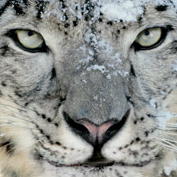Snow Leopard: What's the hurry to upgrade?

With any systemwide upgrade, for some users, especially early adopters, things can and will go wrong. However, the new features and the chance for improved performance will always woo many to upgrade sooner rather than later. And Mac OS X 10.6, Snow Leopard is no different than any other software upgrade.
Several recent posts show Snow Leopard's promise and potential pitfalls.
Chuck Shotton, president of startup Concluent Systems, Monday morning sent out a pair of warning tweets:
Snow Leopard FAILS! Turned my MacBook Pro into Hellen Keller. No screen, mouse, keyboard, or audio. WTF!?!
Apparently MacBook Pro owners are victims of a cruel QA joke being played by Apple -- "Psych! We never tested 10.6 with your machines!"
This doesn't appear to be the widespread experience of upgraders. Still, it's a good warning.
I always clone my system onto a bootable external drive just before installing any system update so that I can immediately restart holding down the Option key and select the older but more usable system from the Startup Manager. This is in addition to a Time Machine refresh. Depending on your system and applications and workflow, the older, wiser plain ol' Leopard may be your friend.
On the other hand, Lloyd Chambers' Macintosh Performance Guide for Digital Photographers & Performance Addicts blog offers the results of performance tests for Snow Leopard. The tested applications included Adobe Creative Suite 4 and Lightroom, Apple Aperture and D-studio's Helicon Focus.
Running Leopard (10.5) takes 3 percent longer on the test than Snow Leopard/32, and 6 percent longer than Snow Leopard/64. The surprise here is that booting 64-bit Snow Leopard is faster; after all Photoshop CS4 is a 32-bit program. The difference suggests that the 64-bit Snow Leopard kernel is more efficient in general.
A difference of 6 percent might not sound like much, but Apple charges $500 more for a 2.93GHz Mac Pro Nehalem over a 2.66GHz model for a 10 percent speed difference. Think of it like a $300 speed upgrade for $25.
He points out that Adobe Lightroom users may want to check its prefs and make sure that the Open in 32-bit Mode setting is unchecked.
Here are some of his conclusions:
Snow Leopard booted into the 32-bit kernel is always faster than Leopard, with fair to substantial gains, depending on the application.
But Snow Leopard booted into the 64-bit kernel shows a consistent performance advantage over Leopard, and even more advantage over 32-bit Snow Leopard as well. Performance gains of up to 30% were observed, making Snow Leopard by far the best value for the money in a long, long time. At about $25 , you won’t find a more compelling upgrade of any kind, anywhere.
Apple’s decision to default Snow Leopard into 32-bit-kernel mode is a losing proposition for most photography related applications: boot into 64-bit mode if you don’t have any hardware/software that precludes it.
